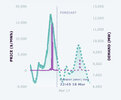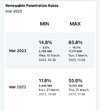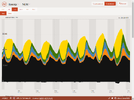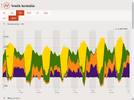No need to get snarly.
All of the power is fed back into the National Grid. It's an net off-set arrangement.
As for wind farms in Canberra itself, as you may know, not all sites are suitable for wind farms for various reasons; optimal wind speed, wind sheer, terrain to name a few.
It has invested in projects outside of the territory to offset its use of fossil fuels through the NEM.
An investment into five different wind farms around the country, coupled with the ACT’s own solar energy production, covers 77 per cent of the Territory’s consumption. The shortfall is then made up of the ACT’s mandatory contribution to the national target.
All of this renewable energy created and purchased technically means the ACT has access to enough electricity from renewables to cover its total consumption. That was achieved three years ago.
At least it made the commitment and put up the funds (ours by the way) to do it.
All of the power is fed back into the National Grid. It's an net off-set arrangement.
As for wind farms in Canberra itself, as you may know, not all sites are suitable for wind farms for various reasons; optimal wind speed, wind sheer, terrain to name a few.
It has invested in projects outside of the territory to offset its use of fossil fuels through the NEM.
An investment into five different wind farms around the country, coupled with the ACT’s own solar energy production, covers 77 per cent of the Territory’s consumption. The shortfall is then made up of the ACT’s mandatory contribution to the national target.
All of this renewable energy created and purchased technically means the ACT has access to enough electricity from renewables to cover its total consumption. That was achieved three years ago.
At least it made the commitment and put up the funds (ours by the way) to do it.








